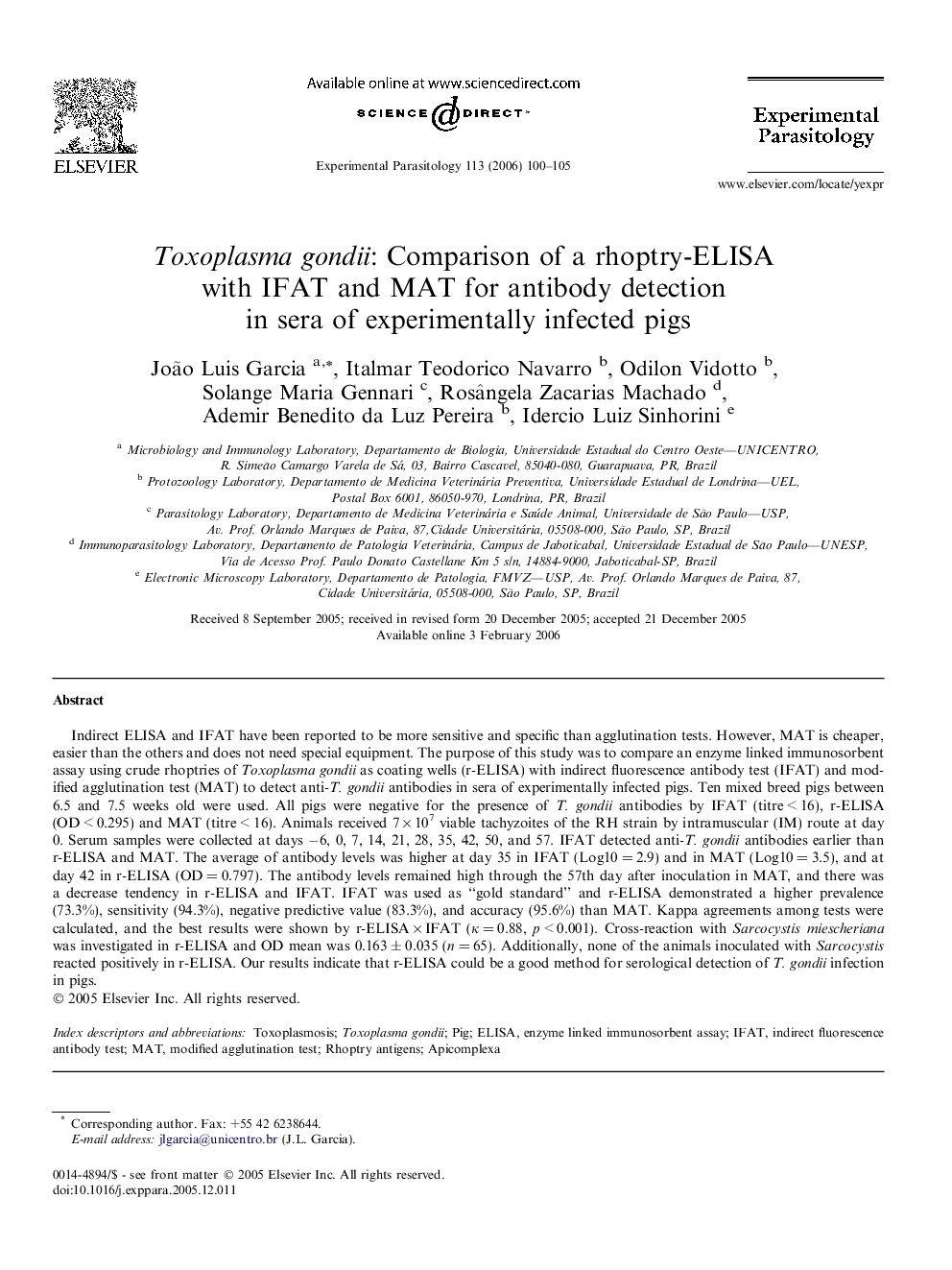| Article ID | Journal | Published Year | Pages | File Type |
|---|---|---|---|---|
| 4372245 | Experimental Parasitology | 2006 | 6 Pages |
Indirect ELISA and IFAT have been reported to be more sensitive and specific than agglutination tests. However, MAT is cheaper, easier than the others and does not need special equipment. The purpose of this study was to compare an enzyme linked immunosorbent assay using crude rhoptries of Toxoplasma gondii as coating wells (r-ELISA) with indirect fluorescence antibody test (IFAT) and modified agglutination test (MAT) to detect anti-T. gondii antibodies in sera of experimentally infected pigs. Ten mixed breed pigs between 6.5 and 7.5 weeks old were used. All pigs were negative for the presence of T. gondii antibodies by IFAT (titre < 16), r-ELISA (OD < 0.295) and MAT (titre < 16). Animals received 7 × 107 viable tachyzoites of the RH strain by intramuscular (IM) route at day 0. Serum samples were collected at days −6, 0, 7, 14, 21, 28, 35, 42, 50, and 57. IFAT detected anti-T. gondii antibodies earlier than r-ELISA and MAT. The average of antibody levels was higher at day 35 in IFAT (Log10 = 2.9) and in MAT (Log10 = 3.5), and at day 42 in r-ELISA (OD = 0.797). The antibody levels remained high through the 57th day after inoculation in MAT, and there was a decrease tendency in r-ELISA and IFAT. IFAT was used as “gold standard” and r-ELISA demonstrated a higher prevalence (73.3%), sensitivity (94.3%), negative predictive value (83.3%), and accuracy (95.6%) than MAT. Kappa agreements among tests were calculated, and the best results were shown by r-ELISA × IFAT (κ = 0.88, p < 0.001). Cross-reaction with Sarcocystis miescheriana was investigated in r-ELISA and OD mean was 0.163 ± 0.035 (n = 65). Additionally, none of the animals inoculated with Sarcocystis reacted positively in r-ELISA. Our results indicate that r-ELISA could be a good method for serological detection of T. gondii infection in pigs.
